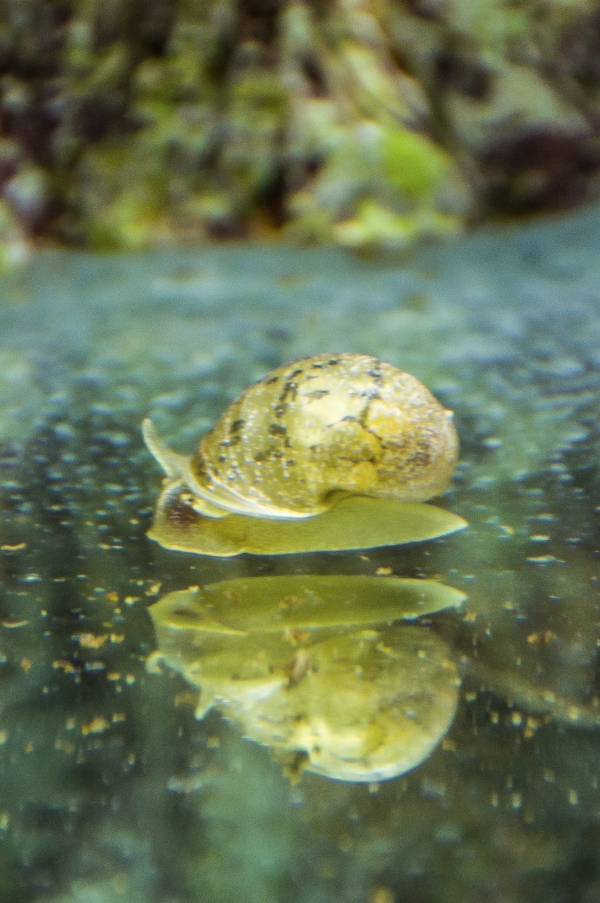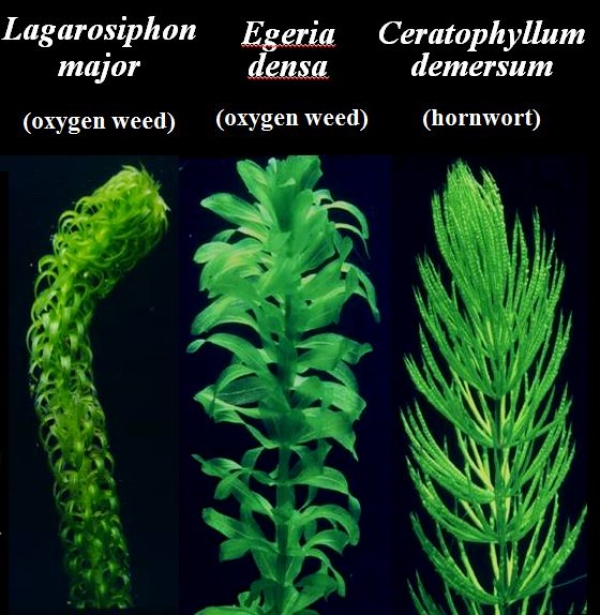Your favourite lake may look picturesque, calm and inviting but beware what lurks beneath – aliens are on the attack.
Aquatic plants in lakes are a natural and important part of lake communities and provide many benefits to fish, wildlife, water quality and people.
Alien submerged weeds, however, are plant species from other countries that have had spectacular success in invading New Zealand lakes and are continuing to spread. In particular, members of the oxygen weed family (Ceratophyllum demersum or hornwort), Egeria densa, and Lagarosiphon major) are having major impacts on lake biodiversity and amenities.
Their ability to establish quickly and form solid bands of weed growing to over eight meters high around the edges of lakes creates a number of problems for lake users and the natural plants and animals that live in the lake. As well as smothering native plant communities, dense invasive weed growth can restrict the movement of water, cause flooding, block irrigation and drinking water intakes, destroy habitats for native fish and wildlife, decrease water quality and restrict recreational activities such as boating, fishing and swimming.
Alien submerged weeds are also causing serious problems for electricity generation by clogging hydro dams. One of the best examples of this is in the Waikato hydro system in the North Island where weeds can cause millions of dollars in lost generation and weed control each year.
Many South Island hydro lakes are also under threat and NIWA scientists are working with Meridian Energy and Land Information New Zealand to control the spread of lagarosiphon which grows rapidly and can block water station intakes if not effectively managed. Other worse alien submerged weeds causing problems in the North Island are not yet known to be in the South Island and lake managers and scientists keep a close eye on unaffected areas to ensure there are no new outbreaks.
Today aerial spraying is one of the most effective ways of controlling large areas of the weed, with suction dredging and hand weeding used to control smaller infestations.
Unfortunately submerged weed species are not the only aliens that have found their way into New Zealand lakes and rivers. The widespread liberation of alien pest fish species including koi carp, rudd, catfish and gambusia (also known as mosquito fish) are compounding problems and contributing to the poor status of some lakes.
Pest fish can make lake waters cloudy by stirring up bottom sediments, feeding on native plants and by increasing nutrient levels that promote more algae. They also compete for food with native fish species.
Once alien invasive aquatic plants and fish have invaded a waterway and become established, they are very difficult to remove. Preventing their spread into new lakes and managing lakes that are affected by these species should be the highest priority.
You can help by knowing the enemy – recognise the four worst waterway weeds and take note of any changes in lakes, ponds, rivers and streams you are familiar with. Many of these opportunists make their first appearance via ornamental ponds before escaping or spreading into natural water systems. Transfer by boats and trailers also spreads them.
Always check boats (including anchor wells and bilges), trailers and fishing gear for plants and remove them when you leave the water.
If you find any suspect organisms contact your local council or call the Ministry for Primary Industries' Pest and Disease Hotline on 0800 80 99 66.
Snails on the loose
If you own a fish tank or outdoor pond, you might find this story familiar: one day you notice a small snail. A week later the snail has companions and before you know it, the tank is crawling in them.
This is exactly what has happened in at least two New Zealand lakes with unknown longterm consequences for their ecosystems.
The culprit is the ear pond snail, Lymnaea auricularia, discovered three years ago in Lake Rotomahana in the Bay of Plenty, and shortly afterwards in Auckland's Lake Pupuke.
The ear pond snail is an invasive species that hails from Europe and Asia and easily spotted. It grows up to 30mm high and 25mm wide, making it larger than our native freshwater snails. It also has black blotches visible through its shell. First recorded in New Zealand in 1977, this snail is known to be common in ponds and aquariums throughout the central North Island.
It only takes one opportunity for a species like this to become established in a water body and, if conditions are right, they multiply and spread.
Scientists say there are at least 10 other introduced snails in various freshwater habitats around the country, several of which have established sizeable communities. This includes a discovery in March 2010 of a super-sized apple snail, Pomacea diffusa, in the Waikato River. Apart from threatening natural ecosystems, these invasive pests are also known to carry parasites.
It's easy to stop an alien snail getting into the wild – don't empty you aquarium in waterways and clean your boats or watercraft if you're moving between lakes.
Meanwhile, NIWA freshwater ecologist Tracey Burton is keen to find out just how the ear pond snail has spread. If you find one, let her know!


